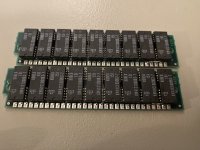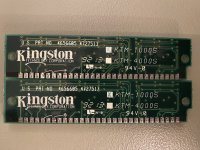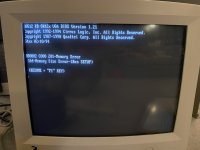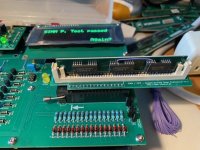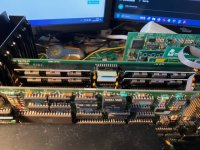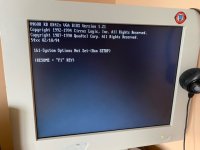mikeyp
Experienced Member
Can anyone offer any insight into my latest problem please?
I have an IBM AT which currently has an AST Advantage expanding it to 640kB. This works fine and POST counts to 640kB. I wish to remove it and add the below:
I have bought the board pictured below. It's marked ASM 55X3543 EC A25158.
RAM is 2x 1Mx9 Kingston modules. Both tested and passed in a Retro Chip Tester Pro for memory and parity errors.
It won’t register on the system. Post stops at 512kB and reports a memory error. Base memory should still surely be 640kB though as that remains configured in the BIOS?
DIP Switches are configured per the manual for 512kB system base memory and a 1MB starting address for expansion memory.
1: On
2: On
3: On
4: Off
5: On
6: Off
7: On
8: On - LPT/COM Enabled - Untested at this point.
Any thoughts/advice appreciated please. I'd really rather not have to send it back to the seller in America.


I have an IBM AT which currently has an AST Advantage expanding it to 640kB. This works fine and POST counts to 640kB. I wish to remove it and add the below:
I have bought the board pictured below. It's marked ASM 55X3543 EC A25158.
RAM is 2x 1Mx9 Kingston modules. Both tested and passed in a Retro Chip Tester Pro for memory and parity errors.
It won’t register on the system. Post stops at 512kB and reports a memory error. Base memory should still surely be 640kB though as that remains configured in the BIOS?
DIP Switches are configured per the manual for 512kB system base memory and a 1MB starting address for expansion memory.
1: On
2: On
3: On
4: Off
5: On
6: Off
7: On
8: On - LPT/COM Enabled - Untested at this point.
Any thoughts/advice appreciated please. I'd really rather not have to send it back to the seller in America.



